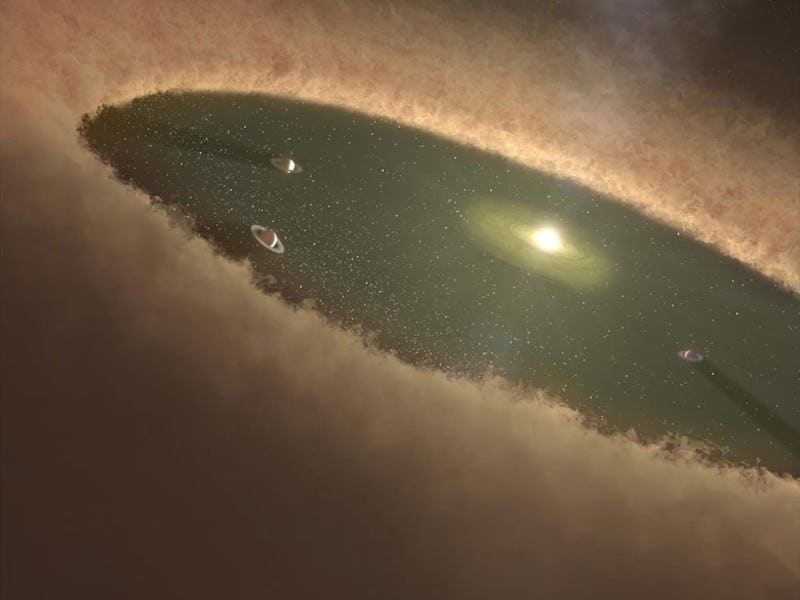Astronomers Are Watching a Planet Being Born Right Now
It’s about as messy as a human birth, actually.

A planet is born. Specifically, LkCa 15 b, about 450 light years away and growing into something resembling the solar system’s very own Jupiter. An international team of astronomers are currently watching the birthing process of this “protoplanet” happen, which they elaborate on in a new Nature paper published Wednesday. In studying the growth of the new exoplanet as it continues to collect matter, the research team is hoping to get a much better understanding of how our own planetary system — the solar system — formed and became what it is today.
Two co-authors of the paper independently stumbled on the planet while analyzing the star LkCa 15, and verifying the cause of hydrogen-alpha light glowing in ultra-hot hydrogen gas nearby
Besides keeping tabs on the exoplanet itself, the team of astronomers are particularly interested in watching how the planet’s LkCa 15 accretes a transition disk around it in which planets are able to form. A transition disk is a ring of dusk and rock orbiting a parent star. That matter tends to aggregate into clearings as it orbits a star, slowly building into the round giants we call planets.
A gas giant itself, like what LkCa 15 b is expected to become, grows out of a rocky or icy core. Hydrogen gas falls from the transition disk onto the core and begins to heat up and glow like a light bulb, emitting a unique ‘hydrogen-alpha’ light signature.
“I was pretty sure I had found something interesting,” Stanford researcher and study co-author Kate Follette said in a statement, “but in this field we’re always chasing objects that are just at the edge of what we can detect. The really cool thing is that it survived all of our tests to make sure it was real.”
This planet’s light is actually quite similar to its parent star, so even a tiny change in intensity could have kept it hidden from us.
Because they are lost in a thick shroud of matter, protoplanets are extremely hard to find, making it very difficult to study how they are born. One of the few other protoplanets we know about is orbiting the star HD 100546, about 335 light years from Earth. Another, 51 Eridani b, is a 20 million year old teenager that’s finishing growing up and now cooling off. Lk Ca 15 b, meanwhile, is just an infant that’s heating up fast.
Monitoring Lk Ca 15 b won’t just help us better understand the formation of the solar system — it may also provide clues for how the rest of the universe shaped up after the Big Bang.
There’s also a bigger reason we want to do a better job at finding protoplanets — and that’s to find Earth-like exoplanets. “It’s cool to look at Jupiter-like exoplanets like LkCa 15 b, but ultimately we’re trying to push the technology to be able to detect Earth-like exoplanets,” said Follette.
When it comes down to it, all space exploration is just a search for E.T.